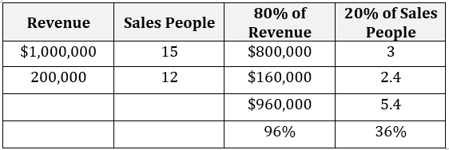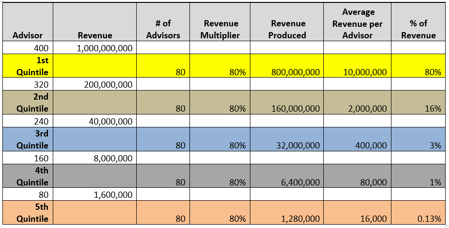We often find there is a direct connection between sales and competitive sports. Due to his time on the football field as both a player and coach, Tony Cole has identified 9 Sales Productivity Tools that will help your producers build better plays, hit harder on the field, and come home with more wins.
Over the next several weeks, Tony will be releasing a series of blogs discussing the 9 Sales Productivity Tools mentioned below in greater detail. Stay tuned for more information!
.jpg?width=1920&name=american-football-ball-brown-2570139%20(1).jpg)
I recently started working with the Moeller High School football team and am inspired to share some of my experiences in this blog and with my followers. I will try not to get too carried away with my football stories, analogies or metaphors but I will likely fail.
Coaching football and coaching sales have so much common ground. My current experiences at Moeller have helped me identify 9 football related sales productivity tools that I will introduce below and write about for the next 9 weeks. It's the season!
When these sales productivity tools are used by managers and salespeople, they will create more productive and effective sales results.
From 1963 to 1984, I either played football or coached football. It was in my blood, it defined me, and it was all that I thought about. It’s how I framed my world. My language and thoughts were always tied to the game, the sport, and the competitive nature of football. I still think and talk like a football player/coach:
- You’re out of bounds
- That’s a Hail Mary!
- You must have played without a helmet
- He’s on the all shorts team
- That’s a long shot
- What do we have to do to win?
If you are not a football fan, you are missing out on something great. No other sport requires the same level of commitment, skill, discipline, courage and motivation as football. But I’ve been out of football since 1984. However, this spring, my friend Tim Mackey asked me to go to lunch to discuss an opportunity he was offered at Moeller High School. That is how I am now involved in one of the most storied high school football programs in the country.
As I started working with the team and other coaches at Moeller, I discovered the linkages between coaching these two great sports: sales and football. The sales productivity tools I describe below are inspired by working with our football players and will help all of the salespeople we coach as well.
Dig in!
9 Football Related Sales Productivity Tools
- Practice Schedule – All professionals need practice. Every team I have ever been part of has a schedule for practice. In that schedule, the game is broken down into units where each specific aspect of the game is practiced: Offensive line, defensive line, running backs, linebackers, special teams, two-minute drill, punt return. You get the picture; you need to have a practice schedule for your sales skills!
- Probability Sales Scorecard – The probability scorecard is like the yard markers on a football field. The markers tell you how many yards you must go to score or how many yards you have to protect to keep from being scored upon. The probability sales scorecard will tell you, with a high level of accuracy, what the likelihood is that you will either win or lose the deal.
- Huddles –Just like in football, huddles are a communication system that provides coaches with real time information so you can make real time decisions.
- Goal Setting – Most teams have a period prior to the season when the staff discusses objectives and goals for the season. The discussions are based on previous performance, expected competition and the talent level of the returning and newly recruited team.
- Success Formula –Each team knows or anticipates what it needs to do to win a game. They need to identify metrics such as: How many yards on first down do they need? What are the average yards per completion and what is the completion percentage? How many passes need to be completed? How well does the punt return team have to perform and what is expected of the defense in the ‘red zone’. You will have the opportunity to download the success formula sales productivity tool in a future blog or you can get it now at: Sales Pipeline Calculator
- Ideal Week – Every team goes into a game with their ideal game plan. In other words what plays do they want to run in various situations on offense and what defenses will they call given field position and tendencies of the opponent. Very little is left to chance. However, there must be flexibility because field position can change in an instant. You need to have a game plan week in and week out and that is done by first identifying what your ideal week looks like.
- Pre-Call Checklist – In football, plays are most often called by the offensive coordinator from the sideline. However during weekly practice, the coordinator goes over a series of pre-snap situations with the offense so they can quickly adjust to the play called depending on what the defense does. You and your salespeople should go into EVERY appointment with a pre-meeting or pre-call checklist so that they are better prepared to execute the play (sales plan) on the call.
- Post-Call Checklist – After every game and sometimes after every practice, the coaches review film and compare it to the plays or defenses called. This allows for a measurement of performance against the planned execution (pre-call checklist). The post-call process allows for corrective action / training and more appropriate follow up steps with the prospect.
- Performance Recording Tools – Back in the day, we used 8-millimeter films to review our game performance. Now digital audio and video devices give football teams instant feedback on practice and game performance. These tools must be used to record practice, and in some cases, live scenarios, so that actual performance can be observed. Observing what someone does is a lot more impactful for both the performer and the coach than attempting to coach based on hearsay or just data reports.
Each of these sales productivity tools will be discussed in detail and available to you in future articles so subscribe to Tony's blog today. As a bonus, sign up below for your 10th sales productivity tool- our Weekly Sales Brew!








